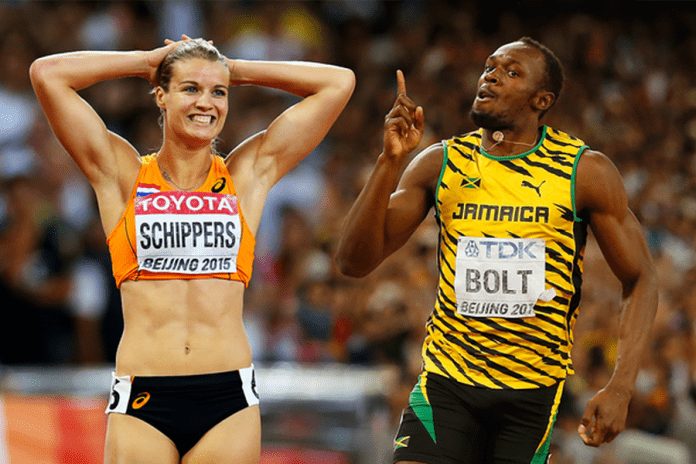Running is a popular sport among people, both women and men compete for their country, a team or they simply like to run a 5K or a marathon. However, it is more common to see men achieve faster times than their female counterparts.
So, let’s put it this way. Consider that women and men train equally hard and men still get the better result. Usain Bolt bolted the 100-meter dash in 9.58 seconds whereas, on the other hand, Florence Griffith Joyner needed almost an extra second clocking in a time of 10.49 seconds.
Well, the answer to this phenomenon is multifold. However, it has a lot to do with differences between male and female body and hormones.
Each human being goes through the phase of puberty. Our bodies are fairly the same before puberty, but during it, males experience a rush of testosterone increase. And when they reach adulthood men have almost 20 times more testosterone than women.

This hormone plays a significant role. Why? Well, it tells the body to create new blood cells, it keeps our muscles strong, our bones too and it prompts growth spurts.
According to Dr. Emily Kraus because women produce less testosterone they are in disadvantage when it comes to muscles. ‘Males have a greater amount of muscle bulk.’ according to Dr. Kraus, primary care sports medicine physician at Stanford Health Care in California.
For example, when we compare legs of men and women it is proven that male’s leg consists of 80% of muscle whereas on the other hand female’s leg only consists of 60% of muscle. That extra bit of muscle helps men run faster. Another important thing is that men’s muscle has larger fast-twitch muscle fibers that help them with sprinting.
This is not all as you need to calculate into the equation the size of the body. Smaller lungs, when compared to men, are a common thing for women. Therefore their maximum oxygen consumption is lower. On average a max of oxygen consumption for a sedentary woman is about 33 milliliters per kg of body mass per minute while men stand at about 42 ml/kg/min according to a 1998 study featured in the Journal Medicine and Science in Sports and Exercise.

Elite runners have higher levels of oxygen consumption (VO2). However, men still have an advantage over women. Kraus said: ‘The amount of oxygen produced at maximum exertion is greater in males than in females’ which means that women have to put in more effort to breathe in oxygen that goes to their muscles.
The heart is another important factor here. Women have smaller hearts, and that means that the stroke volume is smaller. It results in the lower amount of oxygenated blood which then left ventricle pumps out in one beat.
‘Even though women have a higher heart rate, it’s not enough to counterbalance the lower stroke volume that women have,” Kraus said. “Each time the heart pumps blood, that amount of blood is less in a female than in a male. That means less blood and less oxygen are delivered to women’s muscles.”
Females also have less hemoglobin which is a protein in red blood cells that is a carrier of oxygen to the body’s tissues which include muscles also.

Running and biomechanics
When it comes to biomechanics males tend to have longer legs than their female counterparts. That means that they have extra room for muscle plus a longer stride strength. This is a claim of Dr. Miho Tanaka who is an assistant professor of orthopedic surgery and director of the Women’s Sports Medicine Program at Johns Hopkins Medicine.
Women also have wider hips, and because of that, their running stance is not as efficient as those of men.
In the words of Dr. Tanaka: ‘Muscles work efficiently when everything is in line. If your hips are very narrow, like a man’s, then your quads are running straight from your hips, past your knees. It’s in a straight line, so it’s acting in the same direction that you’re running.’

A runner that has wider hips will have more problems since the muscles have to ‘turn a corner’ so to speak. And because of that, men again have the advantage.
That doesn’t mean that women with wider hips aren’t able to run, but it explains why guys on average run faster than girls.
All in all, women have smaller lungs and hearts, because of that their levels of hemoglobin are lower. Less lean muscle and shorter legs are also the factors, and that’s why men have the upper hand here.
Dr. Kraus said in the end: ‘It’s quite impressive; even with these disadvantages at baseline, some women are still quite competitive with men.’









